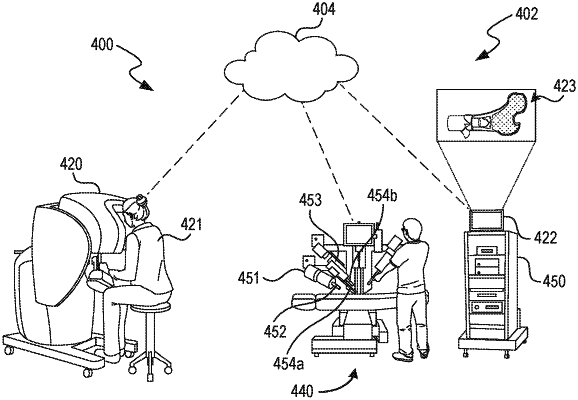| CPC A61B 34/10 (2016.02) [A61B 34/30 (2016.02); G16H 30/40 (2018.01); A61B 2034/102 (2016.02); A61B 2034/105 (2016.02); A61B 2034/107 (2016.02); A61B 2034/108 (2016.02)] | 23 Claims |

|
1. A computer-implemented digital image analysis method for robotic in-vivo assembly and installation of an implant in a patient, comprising:
generating, by a computer system, a three-dimensional (3D) implant virtual model of the implant and a 3D anatomy virtual model of an anatomy of the patient, wherein the computer system is configured to virtually segment the 3D implant virtual model into a plurality of implant components;
simulating, using the 3D implant virtual model and the 3D anatomy virtual model, movement of the plurality of implant components, by a surgical robot, from an incision site toward an implant site via a route within the anatomy;
detecting a pre-implantation route violation of an implant design constraint for a particular implant component of the plurality of implant components in the 3D implant virtual model based on simulating the movement of the plurality of implant components from the incision site toward the implant site;
responsive to detecting the pre-implantation route violation, determining a modification to one or more dimensions of the particular implant component of the 3D implant virtual model, wherein the one or more dimensions are below a threshold route dimension associated with the pre-implantation route violation;
updating the 3D implant virtual model to include the one or more dimensions of the particular implant component;
simulating, using the updated 3D implant virtual model and the 3D anatomy virtual model, which can be moved, by the surgical robot, from the incision site to the implant site while satisfying the implant design constraint;
generating a surgical plan for the robotic in-vivo assembly and installation of a modified implant, based on the updated 3D implant virtual model, at the implant site, the surgical plan describing the incision site, the route, and the implant design constraint; and
installing the modified implant at the implant site.
|